Antique pendants
28 Products
-
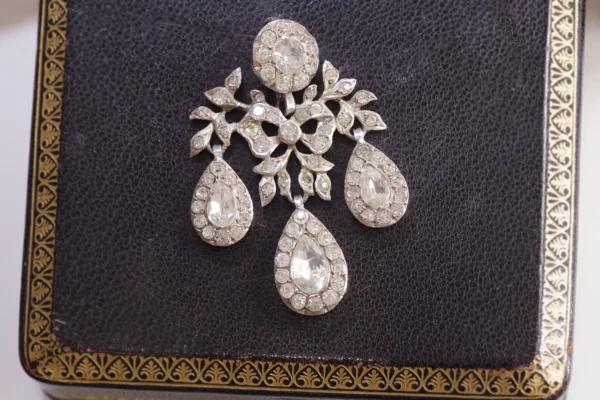
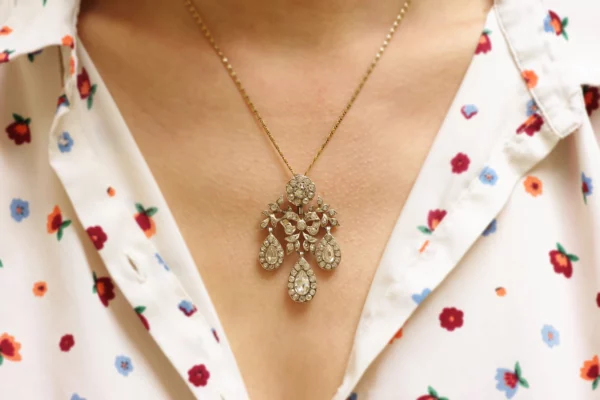 700,00€
700,00€Victorian silver girandole pendant in silver 800. A girandole pendant forming a large knot holding three drops in the style of late 18th-century jewelry. The entire piece is set with white paste stones on foils. Victorian period, circa 1860-1880, France.
Boar hallmarks (french state hallmark for silver)
Height (with setting): 50 mm
Width: 33 mmCondition: fine wear scratches
Weight : 11.31 gr
*The antique box and the chain are not sold with the jewel*
See our antique chains -
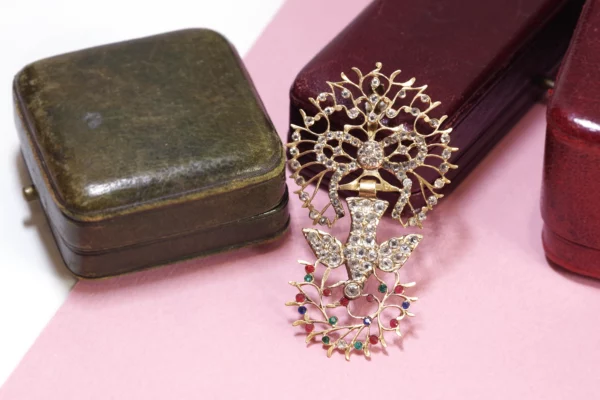
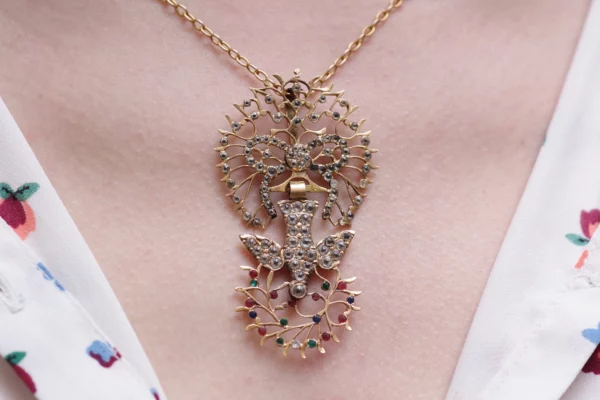 1500,00€
1500,00€Gold Normandy Saint Esprit pendant in 18 karat gold. Originally from Normandy, it features a dove with its head down, holding an olive branch in its beak. The bird hangs from a bow richly decorated with white paste stones, imitating diamonds. Red and green faceted glass adorns the olive branch at the bottom. A flat ring on the reverse of the pendant allows it to be worn on a velvet chain or ribbon. Norman regional catholic pendant, France, circa 1850.
Horse hallmark (1838-1919), regional trumpet hallmark and partially erased goldsmith’s hallmark.
Height: 6.5 cm
Width: 3.7 cmCondition: minor wear
Weight : 8.60 gr
*The antique box and the chain are not sold with the jewel*
See our antique chains -
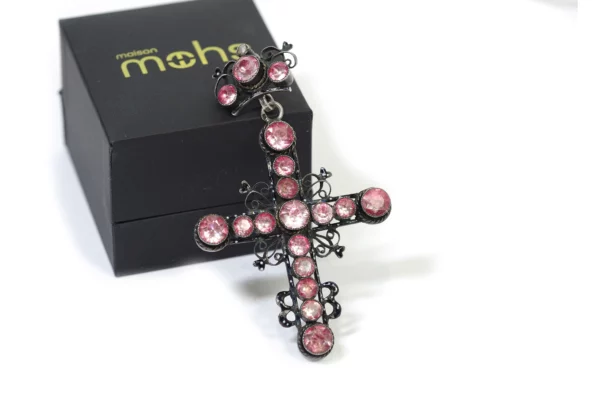
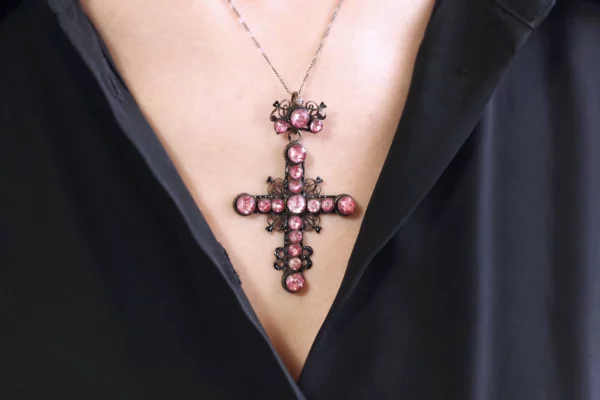 480,00€
480,00€Victorian French enamel foiled paste cross pendant in silver. This cross is in silver with filigree decoration, forming a cross adorn with paste faceted pink glasses on spangles meant to have a look of pink topaz. A black enamel decoration with white dots covers the entire pendant. A glass bead adorns the upper part of the composition. The bezels are completely closed. French work from the beginning of the 19th century
French work from the middle of the 19th century
Wild boar hallmark
Width: 4.3 cmCondition: lack of enamel, cracks.
Weight: 13.37 g
*The antique gold chain is not sold with the jewel*
See our antique chains -
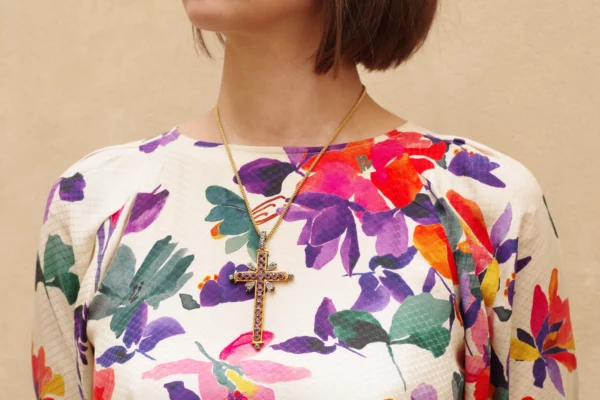
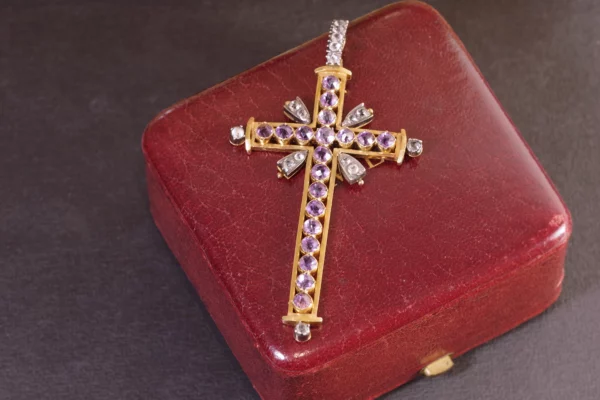 3900,00€
3900,00€Large amethyst cross pendant in 18 karat (750) yellow gold and silver. Large religious cross to be worn as a pendant, set with 19 round facetted amethysts and paste white stones. Religious ceremonial jewellery, late 19th century, southern France or Italy.
Owl and swan hallmarks (French State hallmarks for 18 karat gold and silver).
Dimensions: 90 x 50 mm
Condition: scratches from use, small dents.
Weight: 28.86 gr
*The antique box and the chain are not sold with the jewel*
See our antique chains -
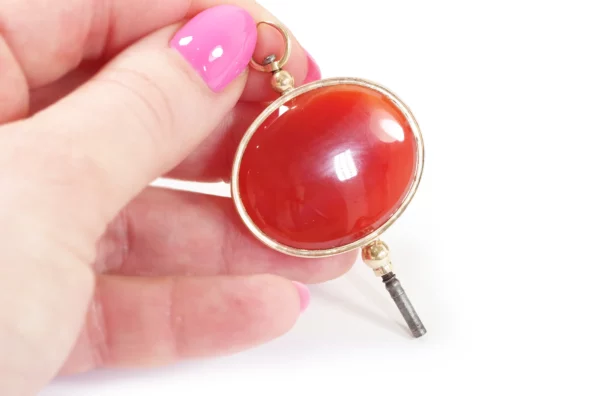
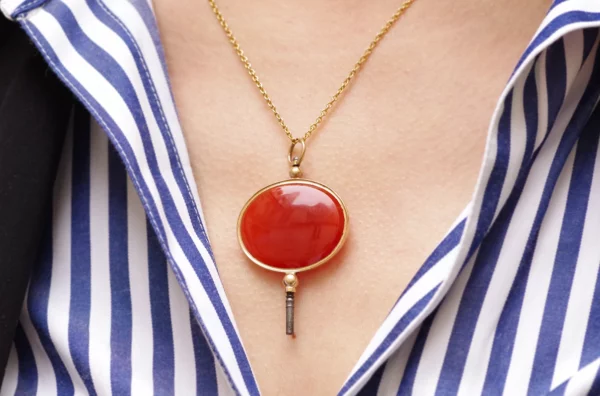 550,00€
550,00€Victorian carnelian watch key pendant in 18 karat (750) rose. An antique watch key pendant, adorned with a large orange cornelian. The structure is rose gold, but the key is metal. Late 19th century jewelry, Victorian period.
Owl hallmark
Dimensions: 57 x 33 mm
Condition: Scratches from use on the metal. The key at the bottom is in metal.
Weight : 11.45 gr
*The antique box and the chain are not sold with the jewel*
See our antique chains -
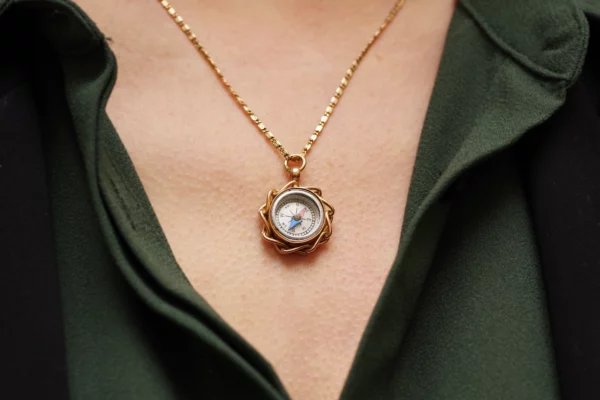
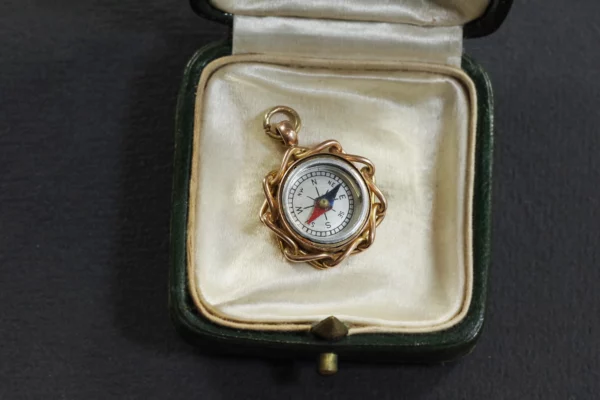 750,00€
750,00€Victorian antique compass pendant in 9 karats gold (375). Lovely compass pendant with an arrow turning on the cardinal points to indicate North. It is protected by glass. The compass is decorated all around with a gold chain motif (not flexible). England, Birmingham, 1900.
English hallmarks : Marine anchor (Birmingham), 9, 375, J.T and lower-case letter a (corresponding to the year 1900).
Dimensions: 27 x 19 mm
Diameter: 19 mmCondition: scratches from use
Weight : 4,66 gr
*The antique box and the chain are not sold with the jewel*
See our antique chains -
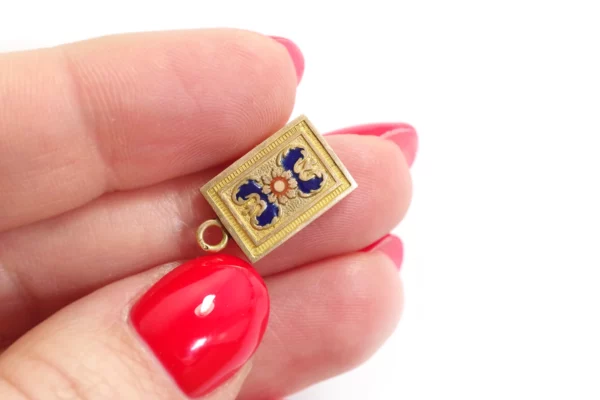
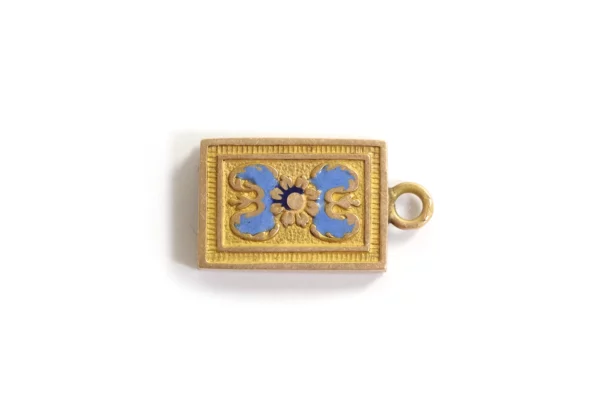 210,00€
210,00€Small enameled clasp pendant in 18 karat (750) gold. This Normandy clasp, in hollow gold. It is decorated with colored enamel: on one side, a red enameled flower framed by midnight-blue leaves, within a cartouche. The cartouche is surrounded by a jagged frieze; on the other side, the same motif […]
-
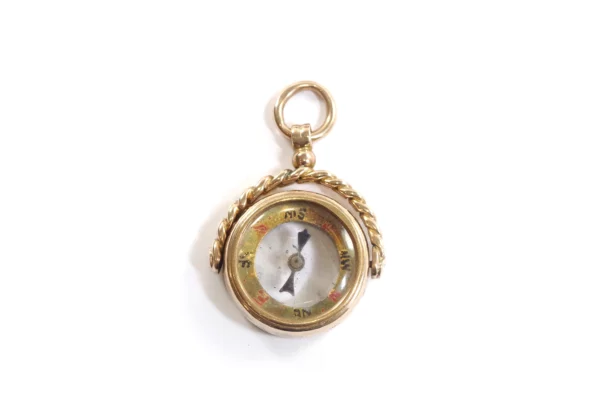
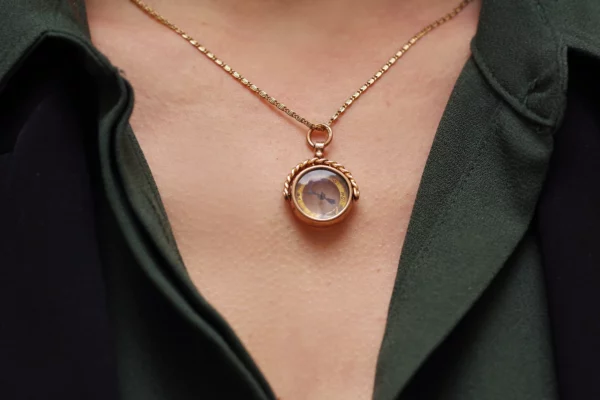 750,00€
750,00€Victorian compass pendant in 9 karat gold (375). A very original compass-shaped pendant that can be rotated on itself, allowing it to be placed on the table to find North. Inside, an arrow rotates on the cardinal points. The compass is two-sided, with both sides protected by glass. It is decorated with a gold cord that holds the hoop. The North indication works. Made in England, Birmingham, 1891.
Clover hallmark, Marks: Marine anchor (Birmingham), R for 1891, MW.
Dimensions: 32 x 20 mm
Diameter: 20 mmCondition: dust inside the compass, slight dents, wear light scratches on gold and glass.
Weight: 5.26 gr
*The antique box is not sold with the jewel*
Learn more: How does a compass work? A moving needle inside the compass reacts to a magnet, the Earth. Indeed, as our planet contains a lot of iron, it is magnetic, and the small moving needle inside the compass uses this to indicate the north-south direction. However, this only works if there are no other magnets near the compass. Note that the needle of a magnetic steel compass always points approximately north.
-
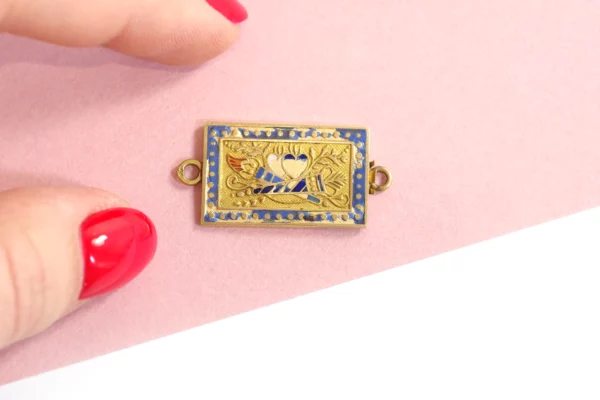
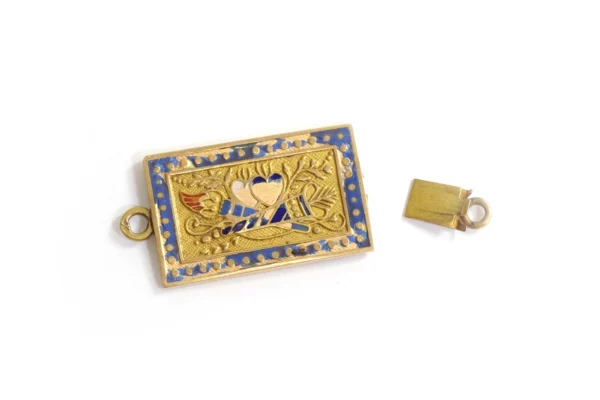 700,00€
700,00€Large enameled regional heart clasp in 18 karat gold (750). This regional clasp, in hollow gold, is rectangular in shape. It is richly decorated with colored enamel motifs: on one side, an enameled flower blossoms in the center of a coat of arms, surrounded by two blue and green pansies in a cartouche. The cartouche is surrounded by a frieze of enameled fleurons and oval shapes; on the other side, two flaming hearts resting on two intersecting horns of plenty, enameled blue and red, within a cartouche. The cartouche is surrounded by a frieze of dots on a blue background. Regional clasp from Normandy, French sentimental jewelry from the mid-19th century.
Eagle head hallmark (french state hallmark for 18 karat gold), France.
Clasp dimensions: 14 x 29 mm
Condition: scratches from use, missing enamel, slight dents
Weight : 1.38 gr
-
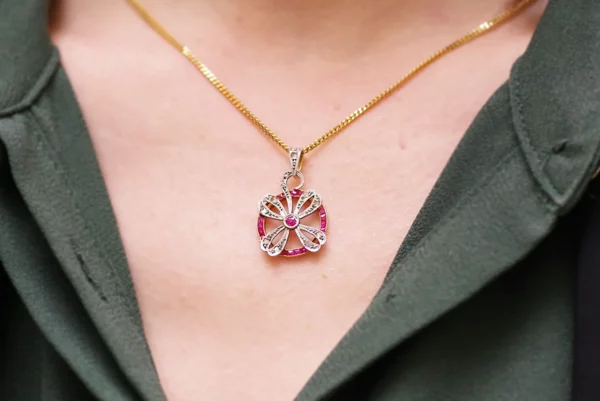
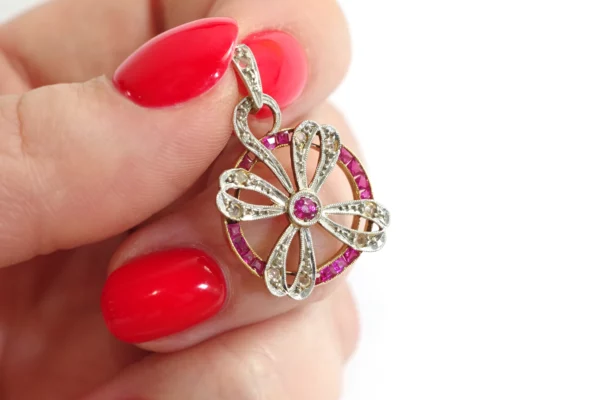 1100,00€
1100,00€Art Deco clover ruby pendant in platinum and 18-karat rose gold (750). A lucky four-leaf clover pendant in platinum set with eight rose-cut diamonds. The clover is centered by a round synthetic ruby and encircled by calibrated synthetic rubies. The jewel’s bail is set with a rose-cut diamond. Charming and rare lucky charm pendant from the Art Deco period, circa 1930, France.
Eagle head hallmark and partially legible goldsmith’s hallmark.
Dimensions (including the bail): 25 x 15 mm
Total estimated ruby weight : 0.18 carat
Estimated diamond weight: 0.05 caratCondition: scratches from use, old setting.
Weight : 2.57 gr
*The antique gold chain is not sold with the jewel*
See our antique chains -
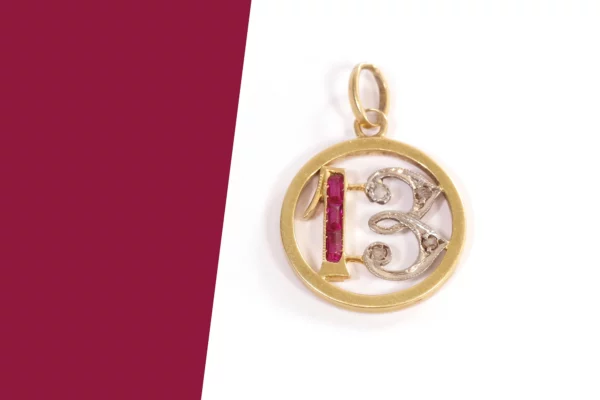
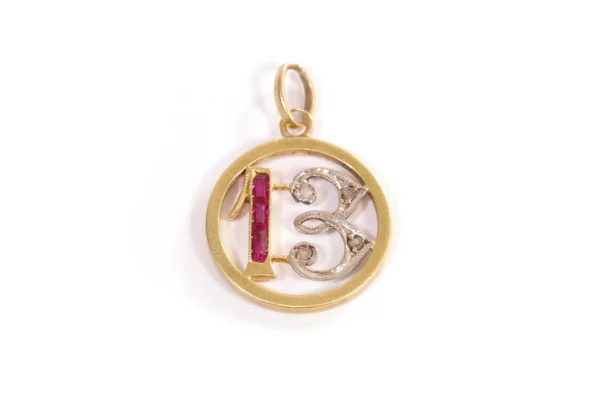
950,00€850,00€Art Deco Edwardian pendant 13 in 18-karat rose gold (750) and platinum. Lucky charm pendant featuring the number 13 at its center, set with 3 synthetic rubies and 4 rose-cut diamonds. These small lucky charm medallions were fashionable in the early 20th century, during the Art Deco period, around 1920-1930.
Traces of an eagle head hallmark
Dimensions (including the bail): 21 x 10 mm
Note : watch the video to get an idea of the size.
Condition: scratches from useWeight: 0.96 gr
-
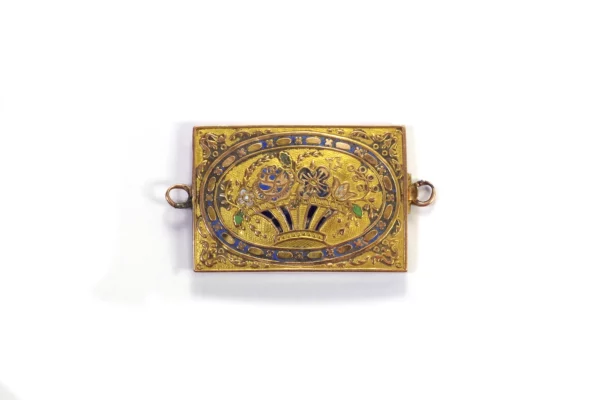
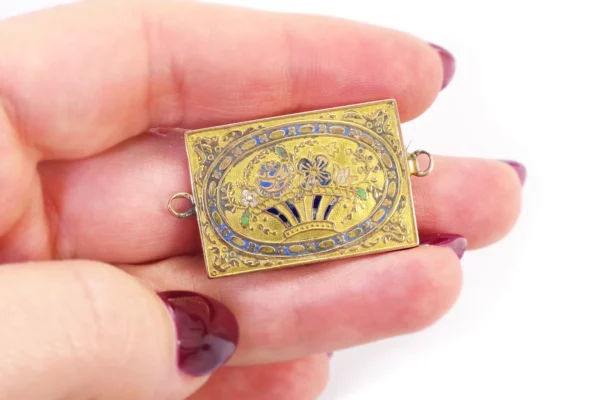 900,00€
900,00€Large French regional clasp in 18-karat rose gold (750) and 14k gold (for the clasp ring). This large Normandy clasp is made of hollow gold. It is richly decorated with colorful enamels. On one side, three partially enameled flowers blossom in the center of the clasp within a cartouche. The cartouche is surrounded by a frieze of dots and semicircles. On the other side, a flower basket composed of pansies, wheat, a rose, and a tulip is featured within a blue enameled cartouche. The presence of pansies is typical of the iconography of sentiment jewelry from the early 19th century, signifying “think of me.”
This Normandy regional clasp is a French sentiment jewel from the early 19th century.
Shell hallmark for standing clasp ring
Clasp Dimensions: 35 mm x 19 mm.
Condition: Scratches from use, missing enamels, slight indentations.
Weight: 3.30 gr
